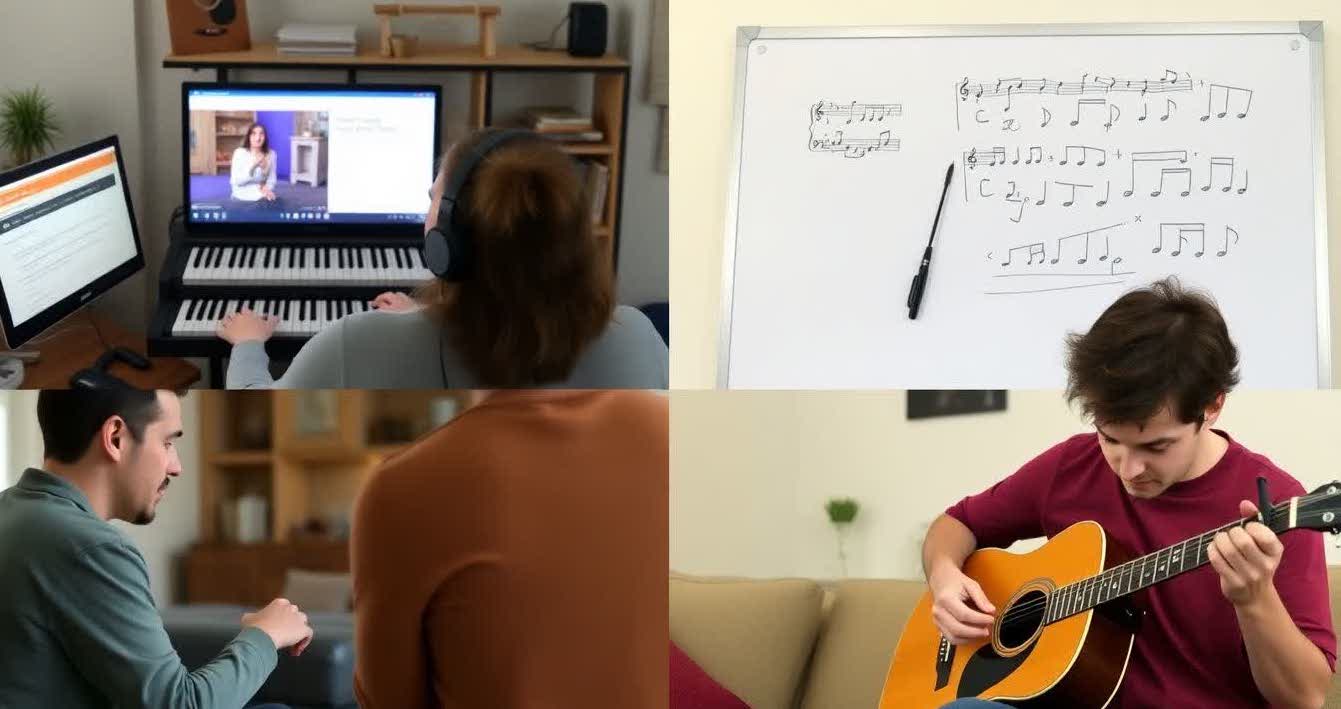July 30, 2025

Not everyone learns music the same way. Some people thrive with clear structure and theory, while others prefer to experiment and play by ear. That’s why choosing the right music learning app isn’t about finding the one “best” overall—it’s about what fits your unique learning style and helps you stay motivated throughout your musical journey.
Music is a complex skill that involves multiple senses and mental processes, so understanding how you absorb information best can accelerate your progress and make learning enjoyable. In this guide, we’ll match common learning styles with ideal music learning tools, including a mix of free apps, online courses, and helpful resources you can start using today—no matter your preferred way of learning.
If you learn best by seeing—whether it’s through videos, diagrams, or color-coded keys—visual learning tools can help you grasp musical concepts faster and with more clarity. Visual learners tend to benefit from structured lessons that use graphics, animations, and notation to illustrate ideas, making abstract concepts concrete.
Best Tools:
Why it works: Visual learners form mental images to retain information better. When you can watch a chord being formed or see the notes on a staff while hearing them played, it reinforces learning and helps with memory retention.
Try this: Follow a structured visual series like a beginner’s guide to reading music to connect the dots between sheet music and the notes you play. This bridges the gap between theoretical knowledge and practical playing.
If sound is your strongest learning channel—if you naturally pick up melodies by ear and prefer listening over reading—you’ll benefit most from tools that emphasize listening and reproducing sounds. Auditory learners often find that hearing a concept explained or demonstrated helps them internalize it better than reading or watching visuals.
Best Tools:
Why it works: Auditory learners process information best through listening, so hearing musical phrases, rhythms, and tonal variations helps their brains encode and recall musical material more effectively.
Tip: Supplement your learning with AI-generated music tracks to practice identifying chord progressions or composing melodies by ear. This interactive practice can make your ear training more engaging and personalized.
If you enjoy dissecting music—breaking down theory, chords, and rhythms to understand how everything fits—you’ll find analytical tools invaluable. Analytical learners like to understand the underlying structure, patterns, and logic behind music, and they benefit from lessons that explain the “why” behind the notes.
Best Tools:
Why it works: Analytical learners thrive when they understand the mechanics behind the music. Breaking concepts into smaller, logical chunks lets them build a solid foundation that supports advanced learning and creativity.
Bonus: Experiment with chord progressions and try composing short riffs or progressions using your newfound theory skills. Applying theory practically reinforces what you’ve learned and boosts your confidence.
If you learn best by doing—playing, tapping rhythms, and physically engaging with your instrument—you’ll want hands-on, interactive tools that allow you to actively participate and get real-time feedback. Kinesthetic learners learn by movement and muscle memory, so repetition and practice are key.
Best Tools:
Why it works: Kinesthetic learners need to engage their body to learn effectively. Using apps that give immediate feedback lets you adjust your technique and build good habits early.
Level up: Use proven practice techniques to structure your practice sessions, reinforcing muscle memory and improving timing and fluidity.
If you’re motivated by creativity, self-expression, and performance—whether you want to sing, compose, or produce original music—you’ll benefit most from apps that support artistic exploration and creation.
Best Tools:
Why it works: Performers and creators need tools that empower them to bring ideas to life, not just learn passively. The ability to experiment and produce original material keeps motivation high and skills growing.
Also helpful: Explore techniques on memorizing songs quickly and effectively to boost confidence in live performance or recording scenarios.
There’s no one-size-fits-all app for learning music because every learner is unique. The best learning experience comes when you pick tools and methods that align with how your brain processes information and keeps you engaged over time.
Whether your strength is visual, auditory, analytical, kinesthetic, or creative, there are free and flexible tools tailored to support your individual journey—from building solid theory knowledge and mastering your ear to jamming along with backing tracks or producing your own songs.
Take time to explore your learning style honestly. Then start with tools and resources that make learning feel natural, enjoyable, and inspiring. When you find the right fit, progress follows effortlessly.
Stay up to date with the latest tips, expert insights, product reviews, and step-by-step guides to help you grow, create, and succeed—no matter your industry or passion.